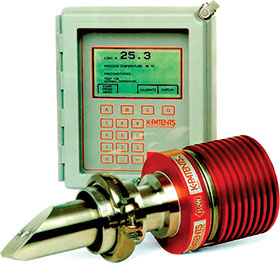

Natural gas contains significant amounts of hydrogen sulphide (H2S) and carbon dioxide (CO2). Natural gas is also referred to as ‘sour gas’ because of its strong odour, caused by the sulphur content. These sulphur compounds render it extremely harmful, even lethal, to breathe. Natural gas can also be extremely corrosive. Carbon dioxide must be removed before the gas can be transformed into liquid form (LNG) for transportation. Liquefaction results in an extremely low temperature (-161°C) at which carbon dioxide can freeze in and plug the lines.
Amine gas treating, also known as gas sweetening and acid gas removal, refers to a group of processes that use aqueous solutions of various amines to remove H2S and CO2 from gases. It is a common unit process used in refineries, petrochemical plants, natural gas processing plants and other industries.
The acid gas absorption in amine solution is conducted using a two column operation: the first column is used to absorb the acid gas into the absorbent amine, the second column is used to regenerate the amine.
The process relies on counter current flow to achieve optimum mixing. A lean solution (low acid gas) enters the top of the absorber and flows to the bottom; acid gas enters the bottom of the absorber tower and bubbles to the top.
The rich amine (high acid gas) enters the stripper, where the acid gases are released and the ‘clean’ amine is returned to the absorber. The acid gases collect and exit at the top of the stripper.
Application
In the regeneration process the amine can degrade or be depleted. In order to achieve the proper acid gas removal the optimum amine concentration must be maintained. Most acid gas recovery systems use either MEA (monoethanolamine), DEA (diethanolamine) or MDEA (methyldiethanolamine).
Degraded and corrosive by-products are removed by carbon filters. Carbon filters also remove amine from the solution, therefore continual amine top-up is required. Filtration is done through a slipstream, so the amine concentration is not totally depleted on each pass. Therefore, the top-up must be based on the quantity filtered.
The amine concentration is traditionally measured by laboratory titration. This technique assumes that all alkalinity is due to amine and can give false readings because of the many inhibiting factors. Furthermore, unlike periodic sampling, continuous in-line measurement provides an instant feedback to indicate any fluctuations in the process. This can be used for real-time process control.
Installation
The K-Patents process refractometer is used to measure the lean amine concentration of the acid gas from the MEA/DEA regeneration stripper column. By maintaining an optimum amine concentration the appropriate acid gas removal can be achieved. Reliable amine concentrations of 18-20% are an advantage for optimal H2S removal. The final amine concentration can be controlled with a top-up, so that the appropriate amount of MEA is fed into the process to remove CO2, as too low a MEA will lower the absorption efficiency, and too high will increase corrosion of the process equipment.
The K-Patents refractometer is unaffected by alkalinity or any other possible inhibiters present in the process. Standard sensor material can be used in this application. Silicon oil is often added to the MEA solution to prevent foaming and therefore periodic prism cleaning (every 3-4 weeks) may be needed. Installation in a by-pass is recommended.
Appropriate equipment with hazardous and intrinsic safety approvals are available when required.
For more information contact Sean Frost, Dupleix Liquid Meters, +27 (0)11 457 0500, [email protected], www.dlm.co.za
| Tel: | +27 11 457 0500 |
| Email: | [email protected] |
| www: | www.dlm.co.za |
| Articles: | More information and articles about Dupleix Liquid Meters Flow Control (DLM) |

© Technews Publishing (Pty) Ltd | All Rights Reserved